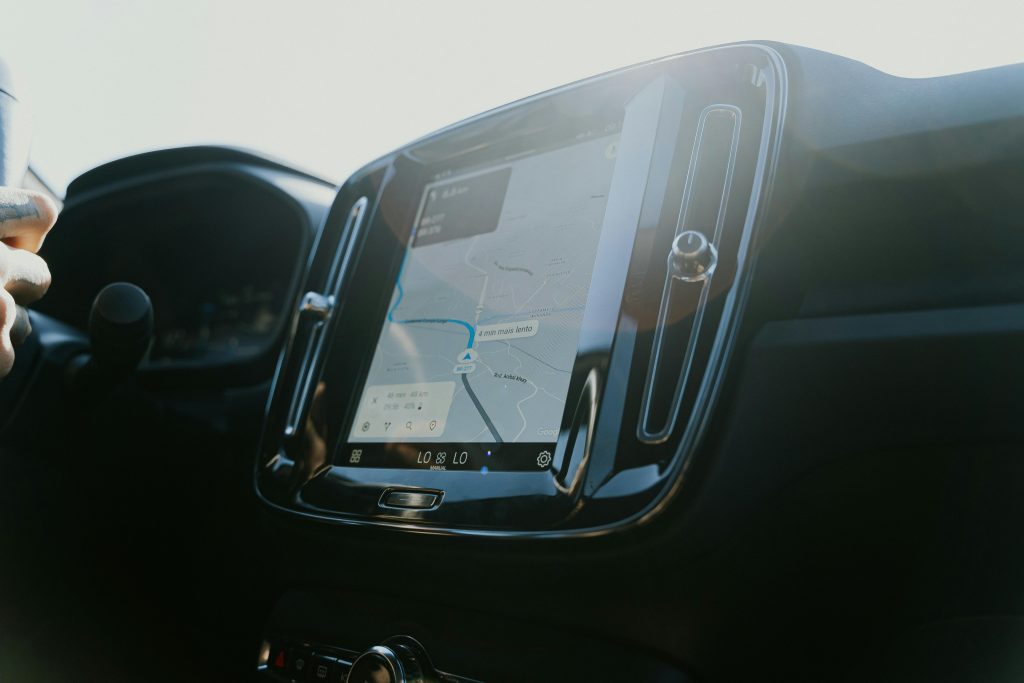Image designed by Freepik
Having grown up on a healthy diet of cartoons and sci-fi shows, I have always been anxiously waiting for the things I saw on the screen or read in a book to make their way into my everyday life. The Jetsons promised flying cars with autopilot features.
Many a summer Hollywood blockbuster has featured autonomous vehicles safely getting commuters to and from traffic accidents a virtual thing of the past. I haven’t gotten any flying cars just yet, but vehicles that can take the wheel and get you safely from point A to point B are almost within reach. Science and GIS (Geographic Information Systems) technology are turning Science Fiction into Science Fact.
How does it work?
So how do you make 1.5 tons of metal moving at 70 mph down the highway with no human driver safe for everyone involved?
A great deal of science and technology goes into getting people to their destinations safely. In order for the vehicle to safely and successfully navigate busy roadways, the vehicle’s software needs to be able to perceive its surroundings and identify traffic patterns, road conditions, and other obstacles.
And that is where GIS gets involved in the process. It allows vehicle designers and engineers to harness the power of spatial data to analyze, visualize, and interpret geographic information so that the vehicle can interact with its environment. Some key pieces of GIS technology for self-driving vehicles include High-Resolution Maps, GPS, and LiDAR.
The foundation of self-driving vehicles is access to up-to-date high-resolution maps. It isn’t just enough to know where your favorite dinner spot is. The vehicle is going to need much more detail. Critical features like road markings, stop signs, and traffic light locations—or in the case of commercial vehicles—clearances under overpasses, or roads are too narrow for commercial vehicles to safely traverse. This data is essential for route planning.
We have a basic framework in our map, now we need to be able to perceive our surroundings. Self-driving vehicles are fitted with cameras and sensor devices to collect data on the vehicle’s surroundings. LiDAR is one of these sensors. LiDAR is a popular remote sensing method used for measuring the exact distance between objects.
Think of LiDAR as the eyes of the vehicle constantly scanning the road ahead and alerting the vehicle to any potential hazards in its path. Whether it’s a stray garbage can, a pedestrian darting across the road, or a sudden lane closure, LiDAR sensors provide the critical awareness that self-driving vehicles need to navigate busy roadways safely.
We are all pretty familiar with GPS these days when it comes to turn-by-turn directions. But for the self-driving vehicle, it is more than just a navigation aid. GPS enables self-driving vehicles to determine their exact location on a map and then combine that high-resolution map with the data from the vehicles’s LiDAR, cameras, and other sensors to localize the vehicle in the environment and navigate safely and accurately.
Are we there yet?
So, are we really there yet? Can we just get in the car and leave the driving to our vehicles?
The short answer is not just yet. But we are getting close. We are seeing basic safety features on new cars implementing the technology that will make them driverless right now. There are models on the market that alert a driver if they are drifting across lanes, give collision warnings, and some will even park themselves.
All of these are steps toward our driverless vehicles. And there are a lot of manufacturers making the journey. Here are just a few examples.
The Google Self-Driving Car Project is probably the first place I heard of where vehicle designers were trying to make the driverless vehicle a reality. The Google Self-Driving Car Project, or Waymo, as it is now known, has been at the forefront of self-driving technology for years.
Initially, Waymo focused on the trucking industry and ride share services but later branched out to set its sights on the consumer market. Waymo has faced some challenges when it comes to producing a fully driverless vehicle, but it continues to work toward bringing fully driverless vehicles to the consumer market.
Tesla is perhaps the most well-known company offering consumer vehicles with advanced driver assistance. Tesla offers vehicles with its Autopilot system. While Tesla’s Autopilot system is not fully autonomous, vehicles equipped with it are able to steer, accelerate, and brake automatically within its lane, under the supervision of an active driver. Tesla continues to work on a fully self-driving package, and the Autopilot system in current vehicles is upgradable as the software gets better at driving.
And these are by no means the only manufacturers working on self-driving vehicles.
General Motors, Ford, and BMW are all offering models with advanced driver assistance as they continue to develop and test fully driverless models. As the technology continues to evolve and regulatory standards develop, we can expect to see more advancements and offerings in the consumer self-driving vehicle market in the coming years.

Are you ready to give up the wheel?
In a world where what we can create is catching up to what we could once only dream of, self-driving vehicles are no longer just the product of the imagination. Engineering and GIS technology are combining to make the promise of safe and efficient driverless travel a thing of reality. So now that you have had a look at what goes into making self-driving vehicles possible rather than fiction, are you ready to turn over the wheel to your new autonomous driver?
If you are interested in learning more about self-driving vehicles and the GIS technologies behind them, check out the links below.
To connect with us directly, email us at connect@geo-jobe.com

About GEO Jobe
GEO Jobe is a leading GIS software and geospatial solutions provider, serving over 10,000 organizations globally. GEO Jobe is best known for developing the most popular applications in the ArcGIS Marketplace, including Admin Tools for ArcGIS, Backup My Org, Clean My Org and Scheduler for ArcGIS.
GEO Jobe offers U.S.-based 24/7 Support solutions for organizations using Esri’s ArcGIS© System. GEO Jobe also offers professional services focused on Esri’s ArcGIS© System, including custom software development, enterprise solution implementation, data science and UAV data collection.
Founded in 1999, GEO Jobe is in its 25th year of operation, has been an Esri business partner since 2002 and is currently a Platinum Partner.




